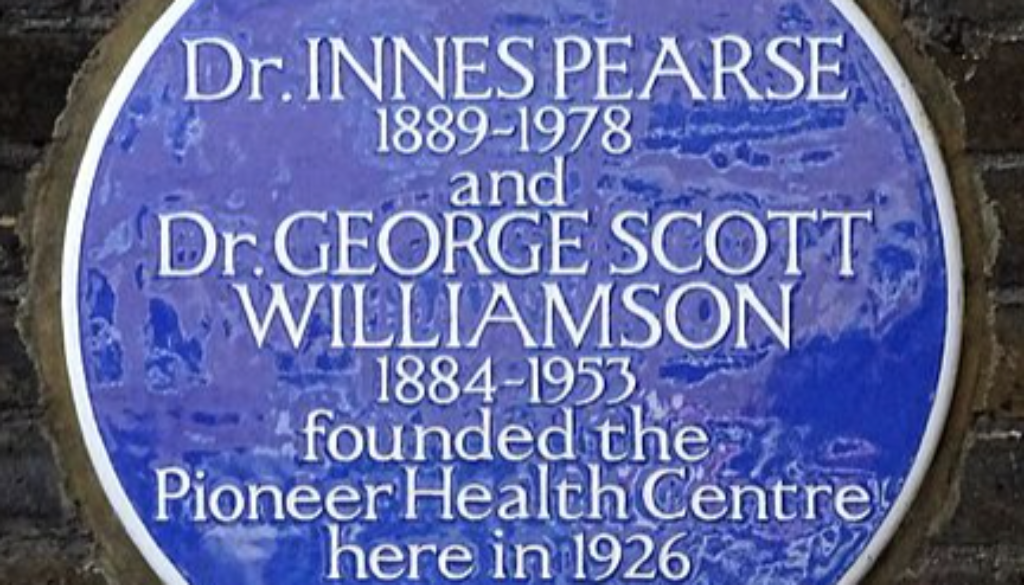Peckham Experiment
Peckham experiment starts
The Peckham Experiment was an experiment designed to determine whether people as a whole would, given the opportunity, take a vested interest in their own health and fitness and expend effort to maintain it. The experiment took place between 1926 and 1950, initially generated by rising public concern over the health of the working class and an increasing interest in preventive social medicine.
George Scott Williamson (1884–1953) and Innes Hope Pearse (1889–1978), two doctors who later married, opened the Pioneer Health Centre in a house in Queen’s Road SE5 in 1926, choosing Peckham, in south east London, because “this populace roughly represents a cross-section of the total populace of the nation with as widely differing a cultural admixture as it is possible to find in any circumscribed metropolitan area” –. Their aim was to study health as a medical condition in a manner comparable to studies of the natural history of disease. The first phase closed in 1929. The findings were disseminated, and funding was then sought to build a larger, purpose-designed, centre. This re-opened in 1935 in a purpose-built Modern building in St Mary’s Road, often quoted as an early example of how new architectural techniques could help further bold new social experiments.
